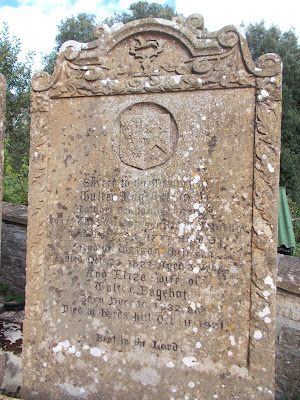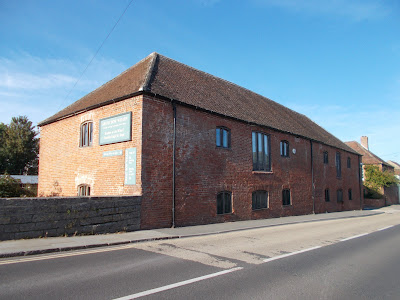Nailsea hides its coal mining heritage well. Most visitors to the town are unlikely to notice the few remaining engine and winding houses or spoil heaps.
The Nailsea Coalfield is an outlying section of the much larger Somerset and Bristol Coalfield. Coal seams in the Nailsea area, which are sandwiched between layers of pennant sandstone, are located in an arc around the north and east of the town. The arc starts in the North Street/Union Street area of the town. It then runs parallel to Silver Street and High Street and continues on through Nailsea Park, Trendlewood and down to Backwell Common and the railway station. The coal measures are deepest in the centre of the arc. The deepest mine was Golden Valley at around 620 feet deep.
Coal mining in Nailsea started in the early 16th century when it is recorded that coal was transported from Nailsea to Yatton to be burnt in a limekiln. At first the coal was only mined where it outcropped near the surface but by the mid-18th century deep pit mining had commenced. There were 10 workable coal seams. Some of them were up to 3 feet 6 inches thick but others were only 18 inches thick and it was barely viable to mine these thinner seams.
Some of the Nailsea coal mines were privately owned but many of them were run by, or associated with, one company – White & Co. This company started in 1786 as a 3 man partnership between Isaac White, Peter Cox and Joseph Whitchurch. In 1788 Bristol glassmaker John Robert Lucas bought a share in the partnership and set up a glassworks in Nailsea, which provided a market for the coal.
Power for winding in the mines was initially provided by horses. Steam pumping engines were introduced in the mid-18th century. This enabled the mining of coal measures, which couldn’t previously be exploited due to flooding. Horses continued to be used for winding purposes until well into the 19th century. Ponies (and young boys) were also employed below ground to haul sleds and waggons containing coal.
Tramways were built to link up some of the collieries (Youngwood/Whiteoak and Grace’s/West End) with the main railway line, which reached Nailsea in the 1840s.
Most of the coal produced was sold locally to heat houses and churches in the town and surrounding villages, to fire local lime kilns, to power the Nailsea Glassworks and in the pits themselves to fire the steam engines.
Output from the Nailsea Coalfield reached its peak in the 1850s. In the 1841 Census there were 149 people in Nailsea and Backwell who were directly connected with coal production. This number rose to 193 in 1851, then fell to 170 in 1861 and 70 in 1871. It rose to 103 in 1881 but by 1891 only 16 people were employed producing coal. Coal mines in the Nailsea area started to decline in the 1860s due to competition from larger mines in South Wales and the North of England, where the coal was cheaper and easier to extract. Nailsea Glassworks closed in 1873 and the last Nailsea coal mine (Whiteoak) closed in 1882.
Several examples of winding and pumping houses remain, three as ruins and two as conversions into dwellings. The most obvious remains are the small winding tower in Millennium Park, which was once part of the Old Glasshouse Pit. The Middle Engine/Elms Pit complex in the Cherington Road/Oaksey Grove area of Golden Valley is now a scheduled monument. The engine house from Farler’s Pit survives in the garden of a private house on the corner of Queens Road and Station Road. In North Lane an engine house has been converted into a cottage and Tall Cottage in Union Street was possibly formerly an engine house.
The remains of horse whims survive at Old Glasshouse Pit and Middle Engine Pit. Spoil heaps remain from Golden Valley, Buckland’s Batch/Goddins, East End, Backwell Common and Youngs Pits.
Former Engine House on North Street, now converted to a private house
Spoil heap on Backwell Common
Remains of Old Glasshouse Pit's horse whim in Millennium Park
The ruined winding tower of Old Glasshouse Pit in Millennium Park
Spoil heap from Youngs Pit in Nailsea Park























































